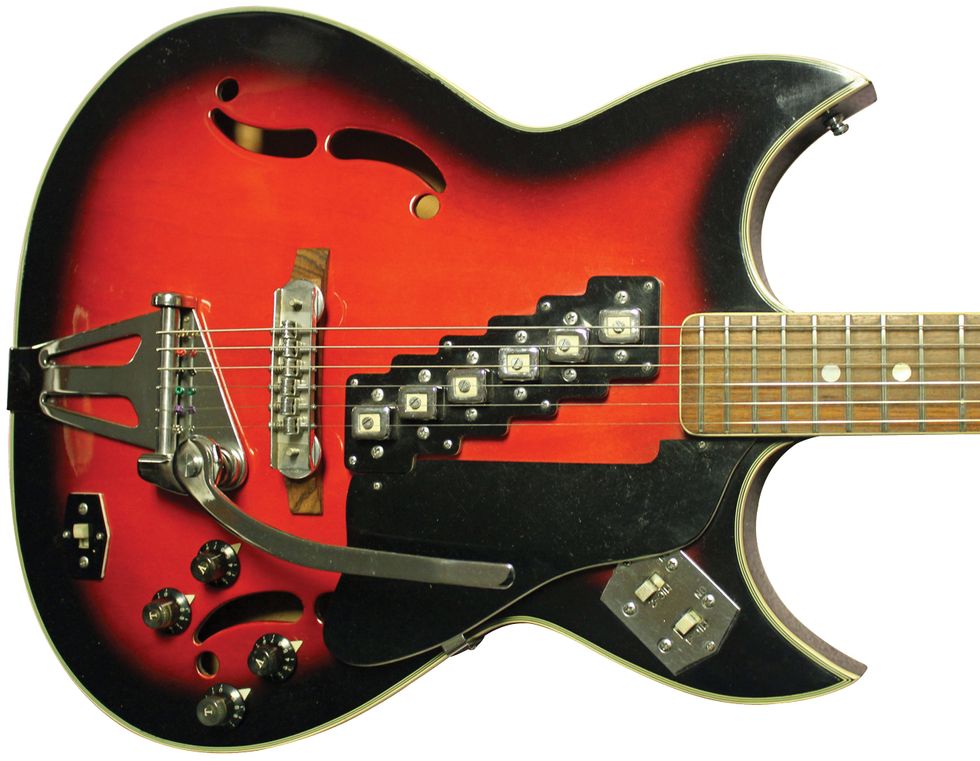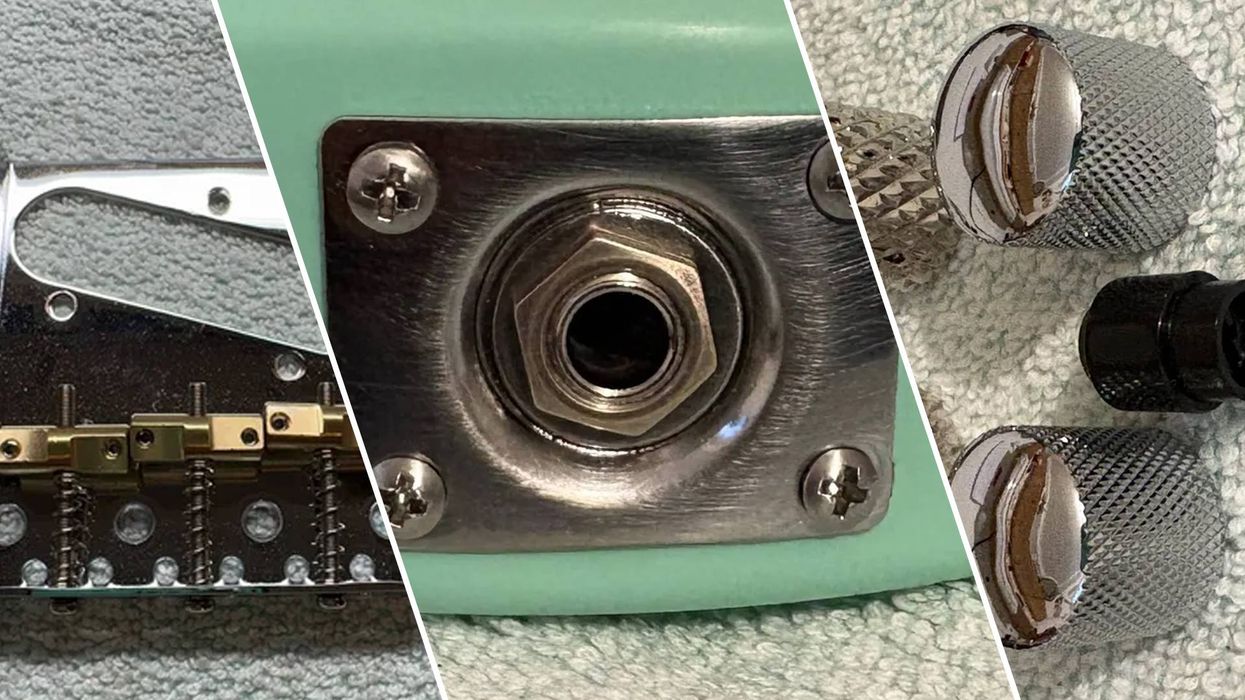Strange looking pickups are sometimes as interesting to me as strangely shaped guitars. Come to think of it, I could probably write several hundred words on interesting guitar pickups alone. Heck, I even like weird cases, but for now, let’s stay on topic.
In the 1940s, ’50s, and ’60s, there were all sorts of original pickups that came and went without having much impact on the guitar-playing world. Some have made comebacks of sorts, like Teisco gold-foils or Valco single-coils, but these represent just a fraction of the interesting stuff that was produced during the golden era of strange.
One such interesting example is the staggered pickup outfitting the guitar from Sekova in Photo 1. These Sekova-branded instruments were manufactured in the FujiGen factory in Matsumoto, Japan, and imported and sold through U.S. Musical Merchandise in New York, New York. First released around 1968, these guitars typically came in two colors (gold and redburst) and carried the model name “Grecian,” which was stenciled on the pickguard of the gold models.
This Grecian was typical of late-’60s FujiGen hollowbody construction. The same body shape and laminate bodies and necks could be found on a couple of different brands, such as the Heit Deluxe HBD and the Merlin Arthur Smith Country Squire. But on the Sekova Grecian we see things got a bit more, well, extreme. Take, for instance, the sharply cut headstock with the exaggerated lines. And how about the funky pickup (Photo 2) that you simply can’t miss?
I always refer to these as “stairstep” pickups, and in my crazier days of guitar hunting, this Sekova was high on my list. In fact, this exact guitar has the honor of being part of an eight-hour trek on the heels of Hurricane Sandy. Yes, I drove from Philadelphia to Pittsburgh to buy this guitar as huge Army transports were rushing past me on the highway to assist with that massive storm. As I recall, I was off from work for a week after that storm hit, but that gave me a lot of time to try to figure out how this darn guitar worked.
Under the hood, the pickup reminded me of a single-coil that had been split into two separate sets of three pole pieces, which essentially meant a three-coil for the lower strings, and a three-coil for the higher strings. The switches on the upper bout turned them on or off, which was really sort of puzzling.
There is also another switch by the jack that apparently served as some sort of pseudo-stereo effect or a preset tone switch, but it had been disconnected and I never could figure it out completely. Either way, the guitar didn’t really sound that great thanks to the typically bad neck angle and the pickup(s) sitting quite far away from the strings.
After a few hours on the bench, I did eventually get the guitar to sound reasonably decent. Still, it was all about the pickup design for me, and I kept thinking about how novel and interesting it was. Since I am always interested in and searching for all things guitar, you can imagine my surprise when I later came across an early Gibson ES-300 with a similar pickup design! It appears that Gibson toyed with a slanted design using a blade-style pickup in the early 1940s, which then evolved into what looked like individual pole pieces under each string. What’s really interesting is that it seems like two smaller pickups mated together—sort of like two small P-90s—just like the FujiGen version.
I suppose this angled design might have its place somewhere in the vast musical kingdom, but like the passenger pigeon … well, you get it.
See this 1968 Sekova Grecian with its wild “stairstep” pickups demoed by Mike Dugan.















![Rig Rundown: Russian Circles’ Mike Sullivan [2025]](https://www.premierguitar.com/media-library/youtube.jpg?id=62303631&width=1245&height=700&quality=70&coordinates=0%2C0%2C0%2C0)




